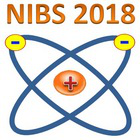Speaker
Dr
Emanuele Sartori
(Consorzio RFX - Università di Padova)
Description
The use of caesium vapour is mandatory in plasma sources for negative ion beams to achieve a sufficient negative ion density. In the SPIDER ion source, three caesium ovens will provide a sufficiently high caesium flux to the walls of the ion source, but also a relatively even caesium distribution in the ion source volume. In order to qualify the caesium ovens in terms of repeatability of the evaporated caesium flow, and to characterize the caesium flux emitted from its nozzle, a set of diagnostics was installed in the small test facility CAesium Test Facility (CATS). This paper reports on the present configuration of the diagnostic set-up. Surface ionization probes are installed in front of the nozzle apertures. Movable surface ionization detectors are used to reconstruct the angular distribution of the emission. A quartz microbalance is installed at a fixed position, to provide the cumulated caesium over time. Finally, the laser absorption spectroscopy measures the line-integrated caesium density. An example of combined measurement is presented.
Primary author
Dr
Emanuele Sartori
(Consorzio RFX - Università di Padova)
Co-authors
Dr
Andrea Rizzolo
(Consorzio RFX)
Bruno Laterza
(Consorzio RFX)
Gianluigi Serianni
(Consorzio RFX)
Ms
Luisa Bizzotto
(Università di Padova)
Dr
Marco Barbisan
(Consorzio RFX)
Mr
Michele Fadone
(Consorzio RFX - Università di Padova)
Dr
Pierluigi Veltri
(Consorzio RFX)
Raffaele Ghiraldelli
(Consorzio RFX)
Dr
Roberto Pasqualotto
(Consorzio RFX)
Ms
Sophie Danielle Angelica Gorno
(Consorzio RFX - Università di Padova)

